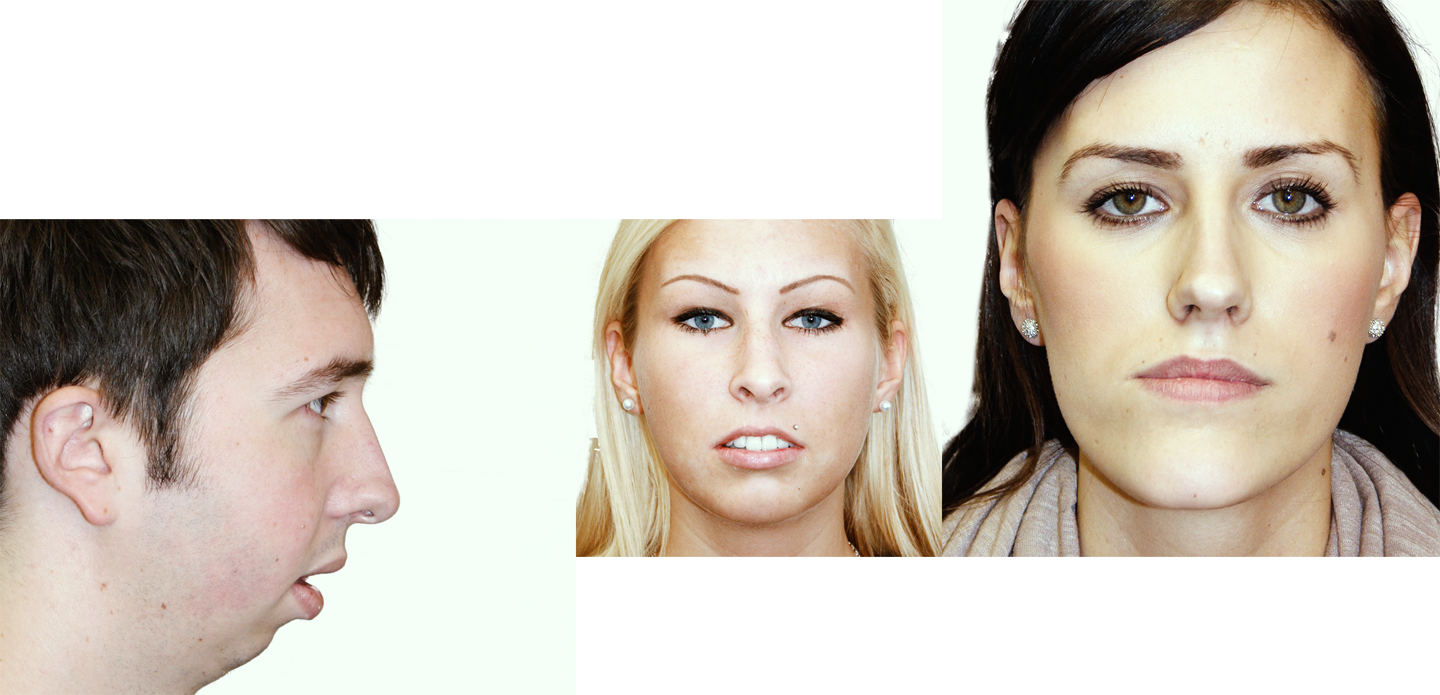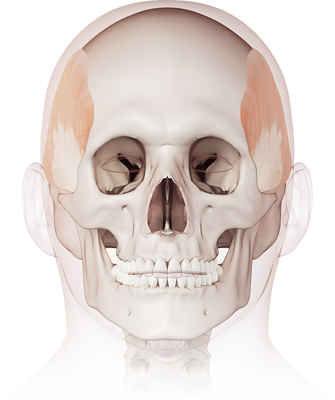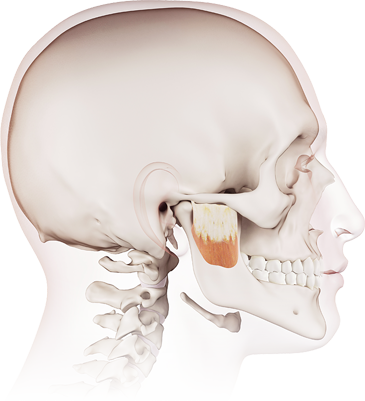
For example, in the case of an overbite or underbite, our teeth don’t come into contact properly. This can lead to discomfort when eating or speaking. Lip closure is often difficult. Due to the link between the muscles used to chew and those used to support the head, dysgnathia can also cause discomfort outside the oral region, such as sleep-related respiratory disorders and snoring. Those affected often suffer from headaches and neck pain. The jaw cracks and is painful.
In Germany alone, five million people suffer from strong mandibular malformations. But only a very few people are aware that oral and maxillofacial surgery can offer permanent support through advanced yet low-impact methods. Minimally invasive surgical techniques enable jaw and facial bone corrections, without external skin incisions or the need for elaborate surgical wires. This solves functional problems while creating visual harmony. Nowadays, our dysgnathia surgery uses standardized routines, carried out daily, for upper and/or lower jaw realignment. Modern computer simulations and 3D printing processes help us plan and implement these surgeries. We are therefore able to guarantee the optimal quality of results.
The jaw deformities can manifest as a transverse (width of the jaw), sagittal (too far forward or backward) or vertical deformity (too high or too low). - Evidently, the deformity can also be a combination of these three. In the sub-headings titled "transversal", "sagittal" and "vertical,” we explain the surgical approaches used to solve these problems.

 Transverse
sagittal
vertical
Transverse
sagittal
vertical

Treatment options for an upper jaw that is too long (long face syndrome/gummy smile)

Treatment options for a retrusive upper or lower jaw (progenism/prognathia)
Attempts to compensate for dysgnathia are often made using cosmetic solutions without considering the functional disorders. For example, teeth with prostheses, such as crowns and veneers, are moved forward in an attempt to cover up the retrusive upper jaw. The optimal function and aesthetics for dysgnathia can only be achieved through maxillofacial therapy and/or maxillofacial surgery.
When it comes to minimal malformations of the jaw, disharmony is primarily noticeable when looking at the position of the teeth. You should therefore first seek advice from an orthodontist who is able to adjust the position of the teeth, if necessary, with the help of fixed orthodontic appliances - also known as brace brackets - or removable retainers (Invisalign).
When it comes to pronounced malformations, only maxillofacial procedures can guarantee ideal results. The jaw is surgically fixed into the anatomically correct position. Because jaw malformations usually result in tilted or severely crooked teeth, a surgical correction is usually performed along with orthodontic therapy. A close cooperation between the maxillofacial surgeon and orthodontist is therefore always indispensable.
Planning and implementing this complex treatment allows us to generate considerable functional (bite and breathing) and aesthetic results.
Don’t hesitate to contact us for a private consultation.